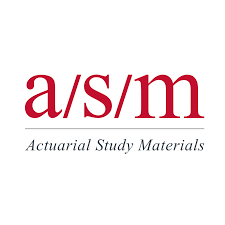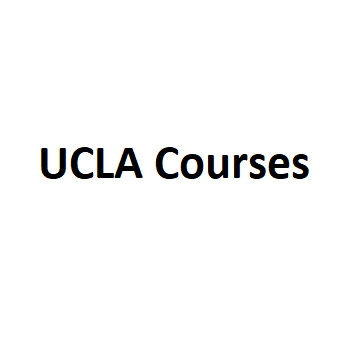Exam Prep

With so many exam prep resources to choose from, sometimes it can be difficult to find the right resource for you. To help you make an informed decision, we have compiled descriptions of some major manuals below for comparison. Please note that this list is non-exhaustive and is limited to resources that BAS officers have personally used. We recognize that everyone learns differently and some exam prep materials may be more effective for some than for others, so we encourage you to explore all exam prep materials and decide which one suits your individual learning style the best.
For each of the resources below, we provide the following ratings:
| Measure | Description |
|---|---|
| Cost | 1 means this resource is on the more expensive side, whereas 5 means this resource is free. |
| Pass Potential | 1 means this resource is not sufficient on its own and you will need to supplement it with other resources to pass the exam, whereas 5 means this resource covers everything you need to pass. |
| Clarity | 1 means this resource is difficult to understand, whereas 5 means this resource is easy to follow along (keeping in mind that the topics themselves may not be easy to understand). |
| Practice Problems | 1 means this resource does not have representative practice problems, whereas 5 means this resource has practice problems that simulate the difficulty of exam questions. |
| Overall | This is the arithmetic average of the four measures above. |

| Cost | 1/5 |
|---|---|
| Pass Potential | 5/5 |
| Clarity | 5/5 |
| Practice Problems | 5/5 |
| Overall | 4/5 |
For my previous exams, I have used an online seminar and a physical manual, but Coaching Actuaries has completely upended my expectations for what exam prep should be. The layout and features of Learn and Adapt are unbelievably comprehensive and detailed.
The manual is clear and concise, and the videos have engaging, color-coded visuals that effectively illustrate concepts and show where numbers are coming from. Both formats include “Coach’s Remarks,” which identify key points and common pitfalls to avoid, as well as what you should memorize and what you can skip (e.g. derivations for formulas that are not on the exam), so you know the important takeaways from each topic.
Studying for actuarial exams is not just about learning the vast amount of material but also learning how to effectively manage your time. To this end, Adapt provides section reports that show your performance in each subsection, so you can quickly decide which topics to spend more time on, making the best use of your time. While you’re working through Learn, every subsection is listed with a difficulty rating, the number of questions on those topics that are expected to show up on the exam, and the number of hours recommended to spend on that subsection, allowing you to prioritize important topics and decide how much time to devote to each section. There is also a study schedule that you can customize depending on your start date, exam date, and how much time you want to spend learning versus reviewing. The schedule provides suggested deadlines for each subsection based on the time you allocate to learning the material as well as the weight of each subsection, leaving little to think about except learning the exam material. Adapt also records all of the problems that you attempt, making it super easy and simple to practice missed questions and track topics that need more practice.
In Adapt, you can build quizzes with customized specifications. You can select if you want to take a section quiz or review missed questions and choose what types of questions to include, such as qualitative or quantitative problems and Coaching Actuaries or SOA/CAS released questions. You also have the flexibility to pick and choose which sections and even subsections you want to practice, as well as the number of quiz questions and difficulty level, so you can tailor your review to your needs. The ability to generate customized quizzes makes spaced repetition painless and increases your retention of material. When it’s time for a weekly or monthly review, it only takes a few seconds to construct a personalized quiz. I can’t emphasize enough how much I appreciate the option to adjust the problem difficulty. In my experience with other exam prep materials, the practice problems at the end of every chapter are always much easier than actual exam questions, so the jump between learning the material and taking practice exams is drastic. In contrast, Adapt allows you to gradually ramp up the difficulty to ease you into exam-level difficulty instead of throwing you in at the deep end and allowing you to miss many questions before you can adjust to realistic exam problems.
One major stressor when it comes to studying for exams is worrying about whether or not you’re going to pass. Adapt’s full-length exams determine your Earned Level based on your performance, which you can compare to others to determine your exam readiness. If a majority of users who achieve an Earned Level of 7 ultimately pass the exam and you have an Earned Level of 8, then this can alleviate some pre-exam stress. Similarly, if you have an Earned Level of 4, then you know you have more to review. Thus, this Earned Level gives you reassurance and serves as a benchmark for your study progress, so you have an idea of how you would perform on the actual exam.
If you have questions about a topic or a practice problem, you can post in the relevant forum and a coach will reply by the next business day.
Depending on the length of your subscription and if you buy Adapt + Manual or Adapt + Learn, Coaching Actuaries could cost $100-200 more than a printed manual. With BAS's Coaching Actuaries discount code, the cost will drop substantially, but it will still be slightly more expensive than alternatives.

| Cost | 3/5 |
|---|---|
| Pass Potential | 4/5 |
| Clarity | 4/5 |
| Practice Problems | 4/5 |
| Overall | 3.75/5 |
I used ASM for Exam FM. However, I had previously taken Math 177, so I had already seen most of the topics covered in the manual before. That being said, when I read through the manual, I found it very clear and understood the topic much better than I had before. Additionally, the practice problems were numerous and very similar to those on the actual exam. Overall, the ASM study manual may not suit everyone’s preferred study method, but it is a more affordable option that will still give you a good opportunity to pass the exam.
Each section of the manual clearly explains the topic using diagrams and examples. Each topic is covered concisely, without any unnecessary information. The conversational tone makes the text more readable and the concepts easier to understand. The manual also contains sections with “trap alerts” that teach you how to avoid potential pitfalls and “trick alerts” that include helpful strategy tips.
After every few sections of content, the manual will have a section with up to dozens of practice problems so you can immediately apply what you have covered. Following the problems are comprehensive solutions that include explanations as well as the calculations.
A lot of students use a Texas Instruments BA II Plus calculator for Exam FM. This is a financial calculator designed for calculating things like interest rates, annuities, and bonds and can make solving problems a lot quicker. However, it can be tricky to use at first, so the calculator notes go through multiple ways of using the calculator to solve sample problems step-by-step.
As this is a paper manual, there are a set number of practice exams. In the FM manual, there were just 6. There are, of course, practice problems at the end of sections that together number several hundred, which you can use to practice individual topics. But some students might want to do more full practice exams than the manual allows for.
Some students might find it difficult to stay focused when learning from a long text and may prefer an online interactive environment where they can learn from videos and create custom practice tests. Additionally, there is no discussion forum where you can ask questions when you get stuck, so if you don’t understand a topic or a problem after reading the solution, you’re on your own.

| Cost | 5/5 |
|---|---|
| Pass Potential | 2/5 |
| Clarity | 3/5 |
| Practice Problems | 2/5 |
| Overall | 3/5 |
For Exams P and FM, I used the respective UCLA courses to learn the exam material. Something to note with UCLA courses is that their contents do not encompass the entire exam syllabus, so extra self-studying is necessary to perform well on exams.
Pretty simple.
If you are a Financial Actuarial Mathematics major, taking exams alongside the classes can be very helpful. The structure of the major requirements reflects the expected progression of exams. You can save a lot of time by studying for exams using classes since you’re combining the time spent studying for classes with the time spent studying for exams.
For a typical FAM major, you will probably be taking Math 170E/177 during your junior year. Given that the recruiting season for actuarial internships occurs during fall quarter, you won’t have an exam passed during recruiting season. This makes it hard to land a top-tier internship since most of them require at least one exam passed to qualify. It is definitely possible and not uncommon to take the courses earlier, but it might be difficult to get into the class.
The professors for each class will introduce most of the exam topics, but there are some extra topics you need to know for the exam that are not covered in these classes. For example, for Exam P, there will be a few questions regarding insurance concepts and terminology that are not covered in Math 170E. Additionally, even though these classes will introduce exam material, they will not cover each topic as in-depth as needed for the exams, which is where you’ll have to do some self-studying outside of classes.
The homework and exam problems given in classes will most likely not be similar to questions seen on the exam. The questions in classes will be more general and theoretical than exam problems. A very good alternative for Exams P and FM is to use the online practice exams provided by the SOA. They are created using released problems and are very similar to what you can expect on exam day.

| Cost | 5/5 |
|---|---|
| Pass Potential | 2/5 |
| Clarity | 3.5/5 |
| Practice Problems | 4/5 |
| Overall | 3.6/5 |
For Exams P and FM, I first took the corresponding UCLA classes (Math 170E/177) to learn the exam material beforehand. TIA offers 2 free full-length practice exams for P and FM along with video + written solutions for each problem. The video solutions were very detailed and helpful in clarifying confusion in difficult topics not covered thoroughly in UCLA classes. Overall, the practice problems are of similar or higher difficulty than the actual exams, and supplementing the TIA sample exams with SOA released problems is a good way to solidify understanding.
Another great (free!) resource to use in addition to UCLA classes and/or study manuals
The exam layout mimics the actual exam, so you can familiarize yourself with the features ahead of time.
After finishing each sample exam, TIA offers video solutions for each problem. Compared to a brief written solution, the videos are more comprehensive in going over the underlying concepts that were tested and also calculator demonstrations for some of the FM annuity problems. Sometimes, the SOA released problems’ solutions are difficult to understand, and going over the video solution for a similar TIA problem could help you grasp the idea.
Since this is a free trial, there are only 2 full-length practice exams. Although students may have completed numerous practice problems while studying the material, it’s important to go through multiple full-length exams to feel confident before the actual exam. A good way to supplement the TIA exams is using SOA’s website to generate full-length exams from past released questions.
Exam P: Problems , Solutions , and Practice Exam
Exam FM: Problems and Solutions
The best way to learn what types of questions are on the exams and how difficult they are is to look over released problems from previous sittings. The links above are taken from the Exam P May 2021 syllabus and the Exam FM June 2021 syllabus, respectively. You can also find these practice problems by scrolling to the bottom of your exam's syllabus (which can be found on the SOA's website).
If you're looking for a budget-friendly manual, Dr. Finan published free online manuals for several actuarial exams. As a disclaimer, BAS officers have only used the practice problems in these manuals and have not reviewed the content. With that being said, even just using the practice problems in these manuals provides you with more sample questions to grind while you prepare for your exam. If you do decide to use the manuals to learn the exam material, keep in mind that they may be a little outdated (Exam P tends to be updated more frequently than FM). You should always look at the exam syllabus for your specific sitting to see what topics have been added or removed from previous sittings. If Dr. Finan's manuals do not cover some of the topics on your syllabus, you'll want to supplement your studying with other resources to make sure you're prepared for the exam.